| Greetings Friend, I hope this email finds you and yours safe and well. The western United States is feeling the effects of our changing climate with the record setting high temperatures throughout the weekend and well into this week. The heat appears to be on a downward trend with some cooler temperatures to arrive this weekend. Just in time for this Saturday's Annual Membership Meeting and Awards. If you have not had a chance to RSVP for the Member Meeting, please make sure to do so before Friday! We need to get an accurate headcount for the event as there is a capacity limit. Right now, the forecast indicates we may really luck out with cooler temperatures and possibly cloud cover on Saturday. Fingers crossed! The fun starts at 2pm where we will mix and mingle until 3pm with appetizers and drinks. Some of our members are helping to continue our potluck tradition by signing up to bring an appetizer to share. Membership business (electing our board of directors), state of EAC, and awards will start at 3pm. I really hope to see you there; this is our first in-person meeting since 2019. I am hopeful that next year we will return to our normal June meeting with our famous potluck! In addition to the Member Meeting, we also have our Litter Bugs Me and Coastal Watershed Clean Up happening on September 17th. If you have not joined a crew or signed up as an individual, organization, business, or group, now is the time! Learn more about the event and sign up today! Finally, I want to add that our current office exhibit, Safeguarding Our Coast and Ocean, is in its final weeks. The exhibit will be open through September 30th. We will be open to the public on September 9th, 16th, 17th, 23rd, 24th, and 30th. Please make sure to stop by and experience the display if you have not already had the chance. We are beginning to plan for our next installment which will celebrate the 50 years of EAC, looking at our past, present, and future. If you are interested in helping with this effort, email me. Exhibit planning meetings start soon. Thank you for your continued support and all that you do to help ensure that coastal Marin is protected for current and future generations. Our community of supporters makes our work possible to safeguard the places you love. In gratitude, |
| 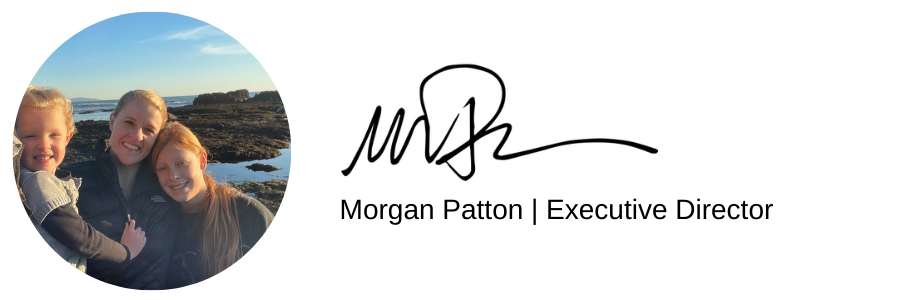 | |
|
| | Seashore's Water Quality Plan Under Review EAC RECOMMENDS NOT APPROVING THE STRATEGY UNLESS CHANGES ARE MADE. Morgan Patton, Executive Director The National Park Service (NPS) released their much anticipated Point Reyes National Seashore General Management Plan Amendment Water Quality Strategy (Strategy) for public review and approval by the Coastal Commission (Commission) on Thursday September 8th. The Strategy is a required Condition of the Commission’s Federal Consistency Determination from April 2021 to ensure the General Management Plan Amendment (GMPA) is consistent with the enforceable policies of California’s Coastal Management Program–Chapter 3 of the Coastal Act–to protect, enhance, and restore marine resources, sensitive habitat, maintain healthy populations of species, biological productivity, and quality of coastal waters, streams, wetlands, estuaries, and lakes. The submitted Strategy focuses on monitoring, developing strategies to improve water quality, implementation timelines, updating lease conditions to include water quality protection best management practices, and annual reviews of operational practices. EAC has reviewed the Commission Staff Report and the NPS Strategy, spoken with staff from the Regional Water Quality Board, NPS staff, Commission Staff, and other environmental partners and is requesting the Commission NOT APPROVE the Strategy unless changes are made. Keep Reading and Read EAC's Comment Letters |
|
|
| 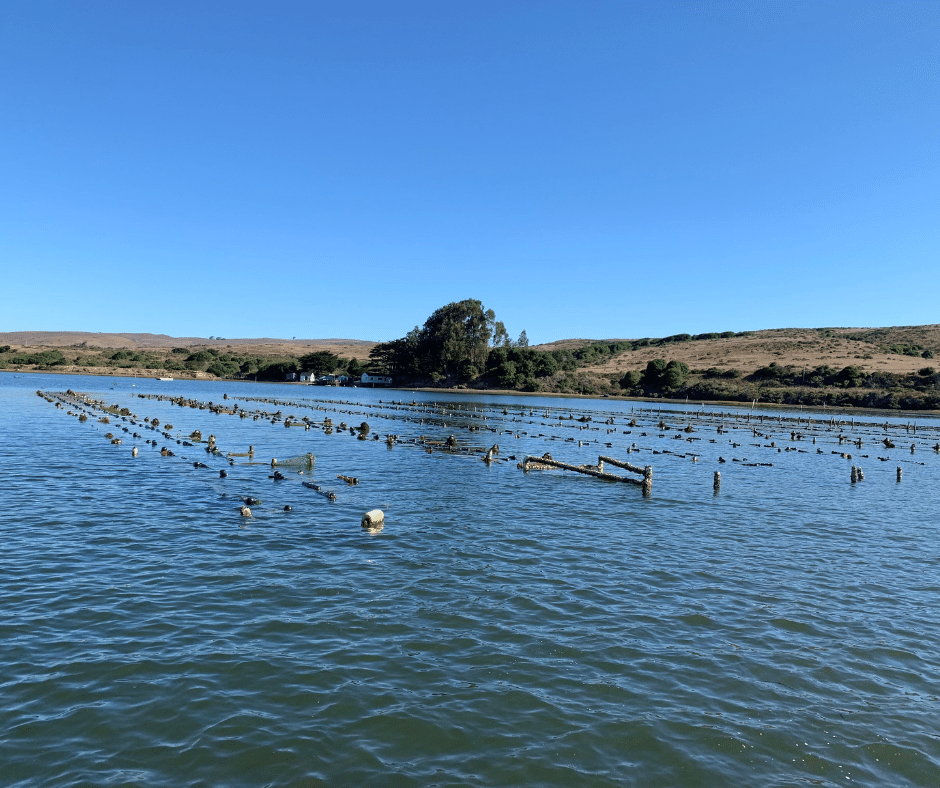 | Tomales Bay Oyster Co. Coastal Development Permit Approved with Strong Permit Conditions
Ashley Eagle-Gibbs, Legal and Policy Director The Coastal Commission (Commission) unanimously approved the Tomales Bay Oyster Company’s existing shellfish aquaculture operations permit at the August 10, 2022 Commission Meeting. New conditions were included that help to safeguard eelgrass habitat. This culminates over five-years of major permitting updates by the Commission, and EAC’s engagement to protect eelgrass habitat in Tomales Bay. Throughout the statewide aquaculture updates, we have participated in the public process emphasizing the importance of the Tomales Bay habitat, species of special biological significance, such as eelgrass (Zostera marina), and declining numbers of local bird species in Tomales Bay. Eelgrass beds are protected under state and federal law due to the crucial role of eelgrass habitat in aquatic ecosystems, and its susceptibility to harm from human impacts. Tomales Bay contains approximately 1,288 acres of eelgrass that accounts for about 9 percent of the total eelgrass habitat in California. Eelgrass shelters, provides nursery habitat, and indirectly feeds species of fish, birds, and other aquatic marine life. It cleans the water, produces oxygen, and protects the coastline from erosion. Eelgrass provides an important carbon sequestration benefit, as it removes carbon from the atmosphere at rates 35 percent greater than the rainforest! Eelgrass pulls carbon from the water, as part of photosynthesis, and locks it away in the sediment. Eelgrass habitat is incredibly difficult and expensive to restore, so it is critical to safeguard remaining habitat areas from development and disturbance. Read our Press Release
Read our Comments |
| |
|
 | County of Marin Bans the Sale of Tropical Milkweed & Board of Supervisors to Recognize Monarchs on September 13th Morgan Patton, Executive Director Often when we think of the monarch butterfly, the eastern monarch butterfly comes to mind with its spring arrival in the United States and dramatic fall migrations to the mountains in Mexico. Here in California, we are fortunate to host the western monarch butterfly that spends its spring and summers west of the Rocky Mountains and migrates in the fall to the California coast where it stays for the winter, finding protection from frost and storms by clustering together in tree groves. On its way to the coast, the monarch passes through Marin County to overwintering areas in Stinson Beach and Bolinas. Historically, the Coast Miwok remember hearing stories from their elders of vast monarch butterfly migrations, a vibrant orange and black cloud large enough to obscure the sun, which stretched for so many miles it could take hours to pass overhead. Unfortunately, over the last 200 years, loss of habitat, use of pesticides, disease, and loss of native milkweed have caused a 97% population decline, placing the butterfly at risk of probable extinction within the next 20-50 years. One critical thing we can do to help monarchs is to plant native milkweed and nectar plants. Monarchs and milkweed enjoy a beneficial symbiotic relationship; the nectar of the milkweed nourishes the butterflies and the butterflies pollinate the milkweed. Monarchs depend on milkweed exclusively for their first life stages. Planting milkweed is critical for monarchs, but it’s just as critical to know where it’s appropriate to plant milkweed and what type. Otherwise, our good intentions can create other problems that the extremely reduced butterfly population may not be able to cope with. Unfortunately, many well-intentioned individuals and nurseries over the years have planted and sold tropical milkweed varieties. Now, thanks to the advocacy of the Marin Monarch Working Group, the County of Marin announced a ban of the sale of tropical milkweed at all nurseries effective August 24th! In addition, to celebrate California Biodiversity Day, the Marin County Board of Supervisors will be recognizing the western monarch butterfly on September 13th! We will have a copy of the resolution at our Member Meeting. Lauren, an EAC summer legal and policy intern, was instrumental in helping draft the resolution. Keep Reading |
| |
|
|  | A Glance at the Inflation Reduction Act
Mairi Pileggi, Board Member In coastal West Marin, the climate crisis will dramatically impact our coastal communities with rising sea levels, groundwater intrusion, drought conditions, wildfire, and increased frequency of atmospheric storm events. All of these factors will create challenges of coastal flooding, property and public infrastructure damage, erosion, and changes to beaches, cliffs, wetlands, riparian areas, and destruction of critical habitat areas that provide valuable ecosystem services. For this reason, it is critical that there is statewide and federal action to implement systematic changes to reduce greenhouse gases and adaptation strategies in our communities. Climate scientists, activists, and politicians agree the federal Inflation Reduction Act (IRA), the most significant climate bill to date, is a crucial first step to reducing carbon emissions to at least 40% below 2005 levels by 2030. The $740 billion legislation is complex, but from a climate perspective, the overall goals include making the shift to decarbonization an equitable and easier transition and supporting the US clean tech industry. About $375 billion over the next 10 years will be allocated to climate projects. A key piece of the legislation will strengthen the Environmental Protection Agency (EPA)’s role in ending our dependence on fossil fuels. Specifically, the IRA defines carbon dioxide as an “air pollutant.” This definition, New York Times reports, “explicitly gives the E.P.A. the authority to regulate greenhouse gases and to use its power to push the adoption of wind, solar and other renewable energy sources.” Of interest to individuals are incentives for purchasing electric vehicles (EVs), home electrification, and energy-efficient properties. Before the IRA, only specific new EVs and plug-in hybrid electric vehicles qualified for rebates up to $7,500. Now eligible used cars qualify for rebates up to $4,000. Rebates on models from manufacturers who have reached their 200,000 caps, Tesla and GM, for example, have also been extended. Instead of waiting for a tax credit, rebates are now available when you purchase your car. Under the current program, however, additional restrictions on income level and car prices apply. In an effort to boost manufacturing in the US, only “vehicles manufactured in North America and powered by batteries whose materials are sourced from the U.S. or its free trade partners are eligible for rebates,” PBS reports. Keep Reading |
| | |
|
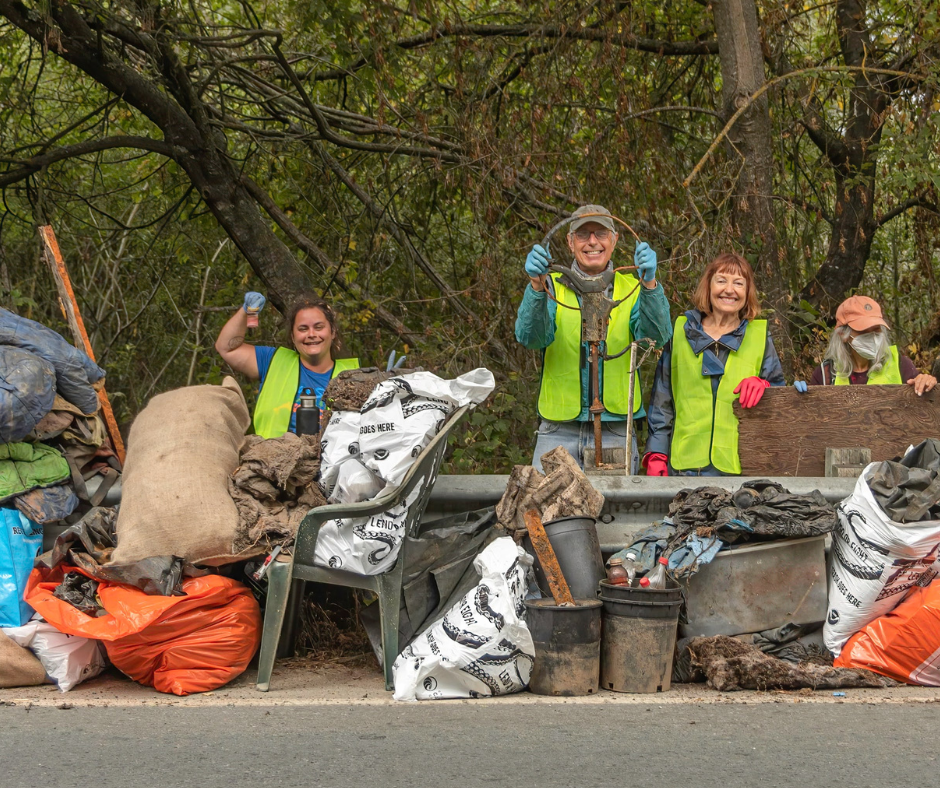 | Team Up to Clean Up September 17th!
Leslie Adler-Ivanbrook, Program Director Litter Bugs Me, our biannual roadside cleanup effort, is coming up September 12th through noon on September 17th, Coastal Cleanup Day (the world’s largest annual waterways clean up event)! Each year in September since 2009, we have been coordinating local village groups to “adopt” a roadside, recruit volunteers and help remove trash from West Marin’s watersheds before winter rains wash the debris into our creeks, bays, and ocean. There’s still room to participate to clean up trash around Point Reyes Station, Giacomini Wetland trails, Platform Bridge Road, Nicasio Reservoir, and Millerton Beach. Safety vests, bags, buckets, grabbers, and gloves will be provided by request. Or, you can be a coordinator for a local organization by signing up your group, choosing a roadside route, and recruiting a Team Up to Clean Up Crew to collect roadside trash from September 12-17th. Learn more about Litter Bugs Me and Coastal Clean Up Day, register as an individual volunteer with EAC, or sign up your local community group as a partner! INDIVIDUAL VOLUNTEERS Looking for a way to help but you are not part of a Team Up to Clean Up Crew, you can sign up with EAC and join us on Saturday, September 17th to clean up trash in Point Reyes Station, Giacomini Wetland trails, Platform Bridge Road, and Millerton Beach. |
| | TEAM UP TO CLEAN UP CREWS Crew teams are organized by a team leader who will coordinate with EAC on clean up locations, gather their team’s volunteers, report their estimated trash weights, and submit photos. Crews pick up trash from September 12-17th. |
| | |
|
| 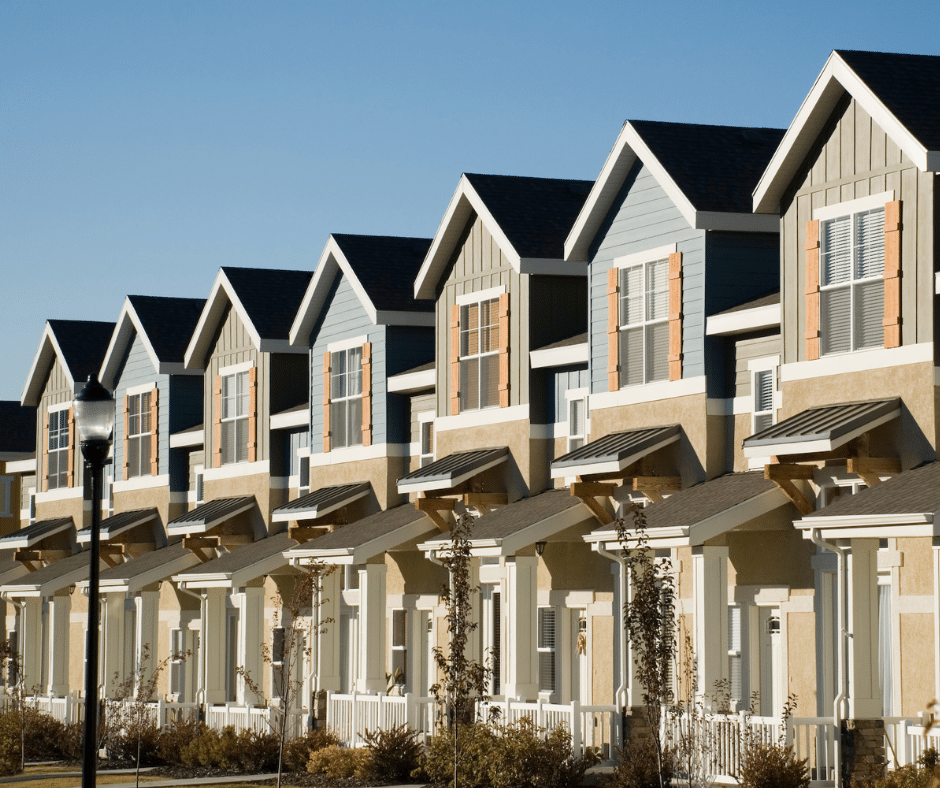 | County Considers Sweeping Changes to Countywide Plan Paving the way for Housing Development
Morgan Patton, Executive Director The County of Marin held a public workshop with the Community Development Agency (CDA), Planning Commission, and Board of Supervisors on August 9th to review the Draft Housing Element proposal that was submitted to the California Department of Housing and Community Development for review. The CDA presented a problematic plan that would make overly broad and sweeping amendments to the Countywide Plan to accommodate potential housing locations to meet the State's Regional Housing Needs Allocation by changing the Countywide Plan environmental corridor boundaries and density zoning rules. This approach fails to consider the decades of public engagement and the County’s track record of robust community planning. Housing is a balance of people and place that requires careful planning and community participation to ensure appropriate development that is not harmful to our environment, does not displace residents, and retains the unincorporated village's rural values. For decades, residents in unincorporated Marin County have worked to develop community plans that balance all of these needs. The public, the Planning Commission and Board of Supervisors, picked up on the dangers of making these sweeping changes that would have unintended consequences that could fail to meet the CDA’s intentions of providing options for building more affordable housing in Marin. Ashley Eagle-Gibbs, EAC’s Legal and Policy Director spoke on behalf of EAC, “Decisions on future development must flow first from the Countywide Plan's policies and guidance, as has been upheld and strengthened by more than 40 years of case law….We continue to request that the Planning Commission and Board of Supervisors uphold the current Countywide Plan and not approve any updates that are not specifically required by the State….The sweeping changes to the Countywide Plan are overly broad. I am not really sure how density can be increased in areas with limited water, transportation, wastewater treatment, and other critical infrastructure….” Keep Reading |
| |
|
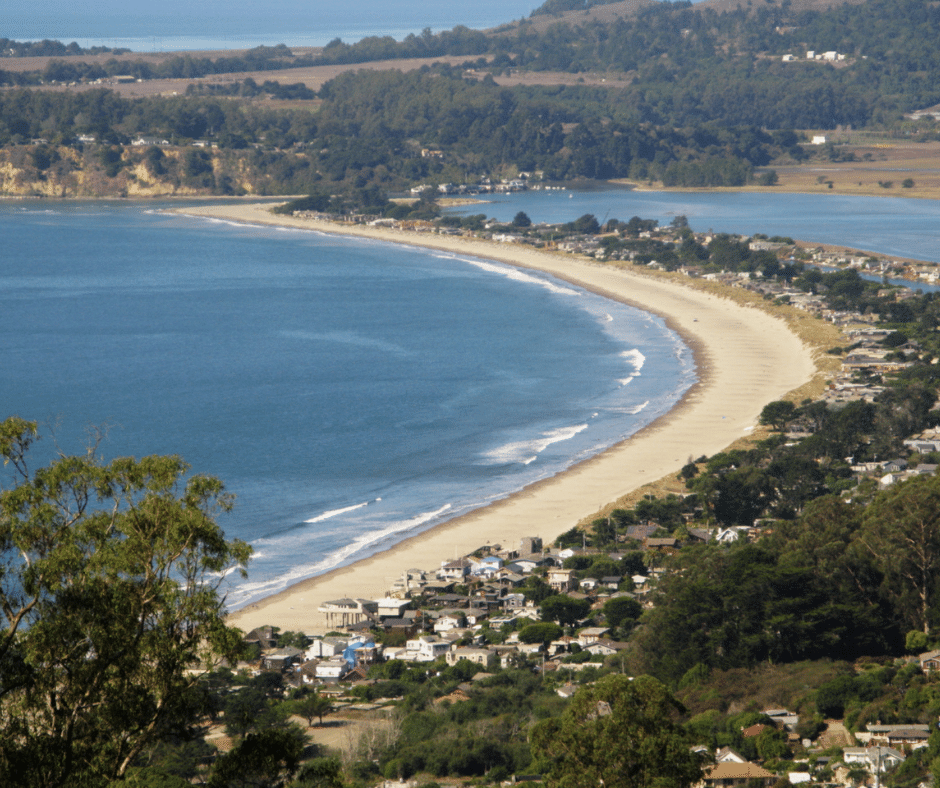 | Coastal Commission Holds Joint Sea Level Rise Workshop
Ashley Eagle-Gibbs, Legal and Policy Director In August, the California Coastal Commission held a half day joint workshop with the League of Cities, California State Association of Counties, and local government officials on sea level rise. At the workshop, progress made by the Local Government Sea Level Rise workshop was reviewed, experiences were shared related to statewide Local Coastal Program updates, and public input was gathered on the working group’s 2022 goals. The working group is made up of representatives from cities, counties, and Coastal Commission staff. EAC spoke at the meeting, alongside other NGOs and government representatives. Joining other coastal NGOs, like Surfrider and WILDCOAST, we voiced our support for nature-based solutions, public access, and voiced our opposition to armoring the coast. “Related to adaptation planning, our priorities are focused on supporting pro-active phased adaptation with triggers, long-range planning, and nature-based and blue carbon solutions (rather than hard armoring), which we are generally opposed to,” stated Ashley Eagle-Gibbs, EAC’s Legal and Policy Director. We emphasized the need to prioritize biodiversity and coastal resources, while using the best available science. We pointed out that our courts have consistently prohibited seawalls for new development. We also raised public access and equity issues: “Often [people] that travel from inland areas to our local beaches to seek respite from the heat are not represented in these discussions. If everyone gets a carve out, we will lose our beaches.” In other words, if each property is able to get an exception to the rules and build a seawall, our public beaches will be eroded and lost. You can count on EAC to advocate for our collective coastal resources and public access to the coast! We all need to find a way to move forward collaboratively in a way that is consistent with the voter-created Coastal Act. Keep Reading |
| |
|
| | 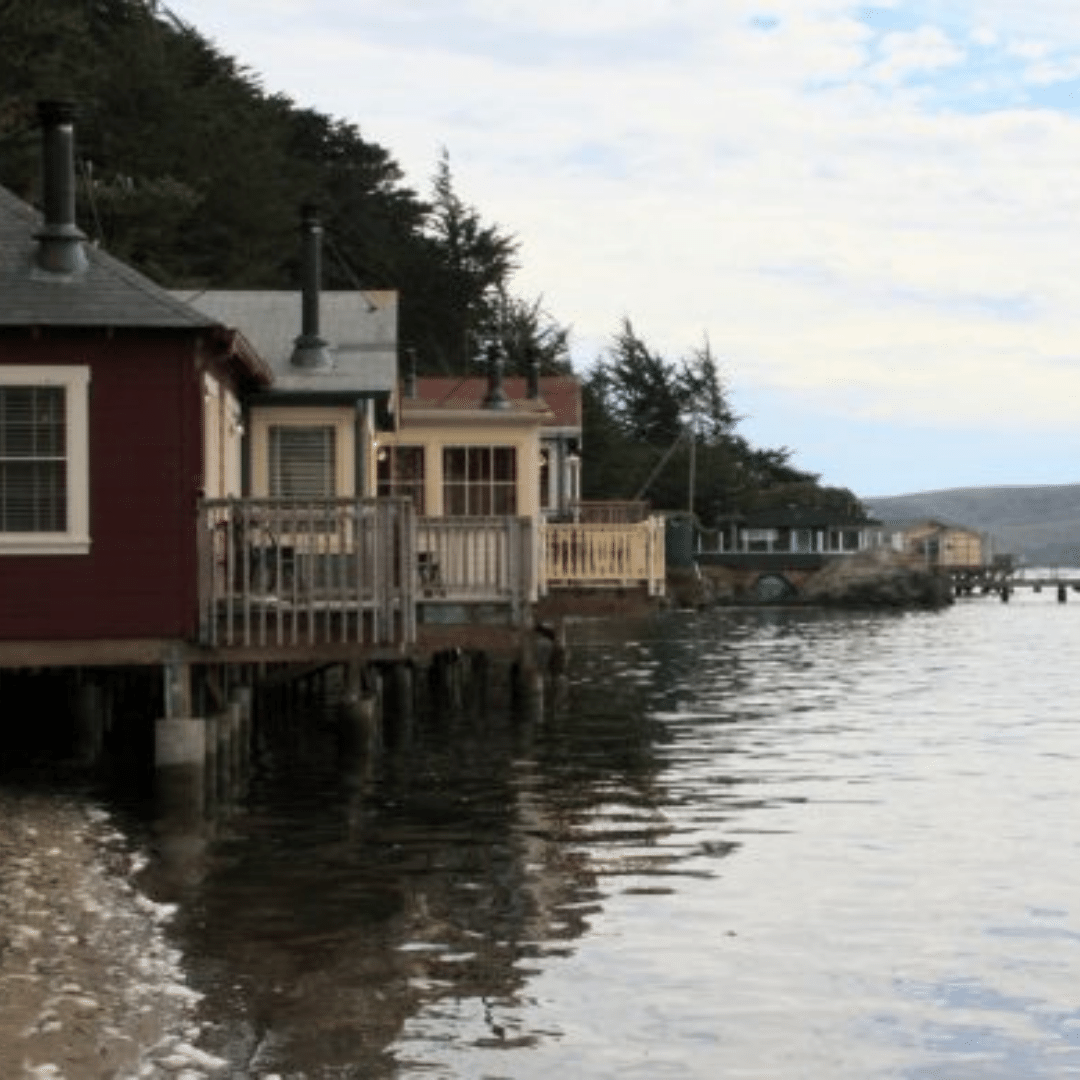 | Climate Adaptation Planning: Tomales Bay The County of Marin and partners published a Multi-Jurisdictional Local Hazard Mitigation Plan in 2018 to assess risks posed by natural hazards and develop a mitigation strategy to reduce risk. The County is now updating the plan with a goal to finalize in the Spring of 2023. As part of the update, the County is assessing the bulkheads surrounding Tomales Bay to determine their structural integrity and continued capability to protect homes, roadways, and other assets from flooding. The draft Tomales Bay Bulkhead Vulnerability Assessment, indicates 75% of bulkheads will overtop in an extreme sea level rise (SLR) scenario. If you are concerned about climate adaptation and planning, you can review the June draft 2022 Vulnerability Assessment, watch back the July 2022 Meeting, and attend future meetings. We will also keep our community up to date in the coming months. |
|
|
 | Don't Forget Bird Festival Webinar Online Passes! We had a hoot with all the attendees and guides who joined us for the Point Reyes Birding & Nature Festival this past April. This year, we were able to host our event in-person, while also providing a 4-day virtual program, so people from anywhere could join in on the fun, and learn about our amazing coastal resources. For those of you who purchased a Virtual Pass, you can still access all eight programs through December 31, 2022. - Check your email for how to sign up for access, or contact events@eacmarin.org or Jess Taylor at (415) 663.9312 for help and the special access code that was emailed in May 2022.
Don’t have a pass? Scoop up yours today for just $40 and watch through the end of the year. |
|
|
 | Call for Photographs We need your help! We are preparing to publish our visitor stewardship guide that addresses some of the negative impacts to the natural environment from high visitation. This guide will highlight principles of Leave No Trace to help reduce pressure from trash, human and pet waste; and provide insight on how to plan ahead, share the trail, respect wildlife, and more! As we are in the final stages, we are in need of your photographs to help us finish this guide! Photo Needs: People enjoying the beach; trash cans in coastal Marin; people hiking, dogs on leashes on beaches or trails; kayaking and swimming in Tomales Bay; camping in Point Reyes or Samuel P. Taylor; traffic and parking issues; and landscape images of your favorite places in coastal West Marin. Submission is free and open to all professional and amateur photographers and will be published in the guide with credit. Submit photos here by September 16, 2022. |
|
|
| 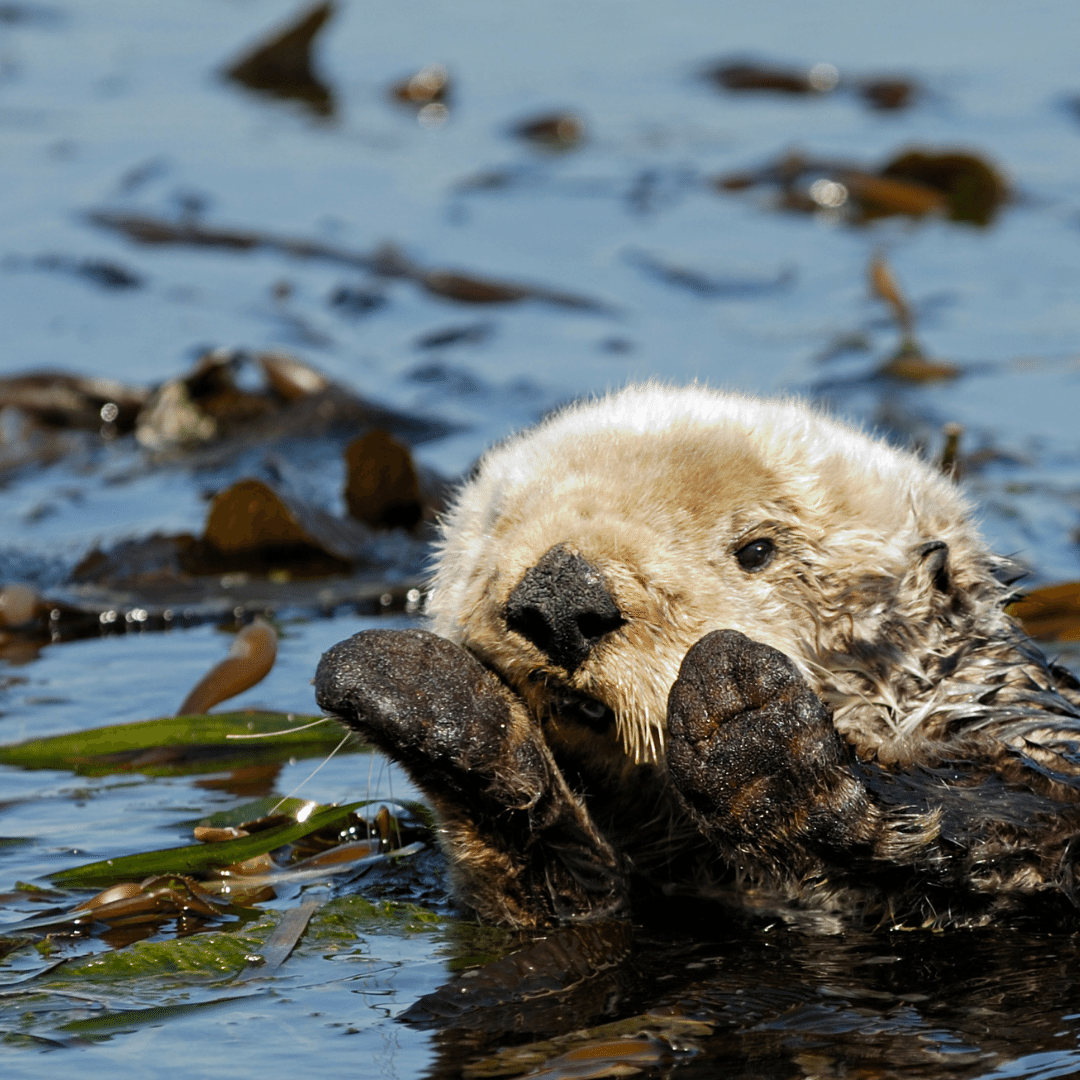 | Are Sea Otters Coming Back?! The U.S. Fish and Wildlife Service (USFWS) has evaluated the feasibility of reintroducing sea otters to their historical range along the US West Coast and concluded that a reintroduction of sea otters to their historical range in northern California and Oregon would provide substantial species benefits! Otters are keystone species that play a fundamental role in the ecological health of nearshore ecosystems. They eat sea urchins and other marine grazers, which helps keep kelp forests and seagrass beds in balance. Their presence in the ocean enhances biodiversity, increases carbon sequestration by kelp and seagrass, and makes the ecosystem more climate resilient. Reintroduction may also increase the genetic diversity of recovering sea otter populations and contribute to the conservation of the threatened southern sea otter. There is no specific proposal or timeline for any reintroductions at this time, but the USFWS has recommended potential next steps. EAC will be following this potential reintroduction and its impacts on our coastal marine environments. LEARN MORE: |
|
|
 | How to Green Your Home Are you interested to learn about how Marin residents are adapting their homes to combat climate change, improve air quality, generate clean energy, and move towards a safer, healthier, greener, and more resilient future? The free, virtual Marin Home Tour features short video tours of 10 Marin homes, followed by live Q&As with homeowners. There will be short presentations on heat pumps, induction cooking, solar & storage, rebates, and more. We are thrilled that EAC Board Member, Mairi Pileggi, will be featured as one of the 10 homes for this educational event. This event is a project of Sustainable Marin. LEARN MORE & REGISTER: |
|
|
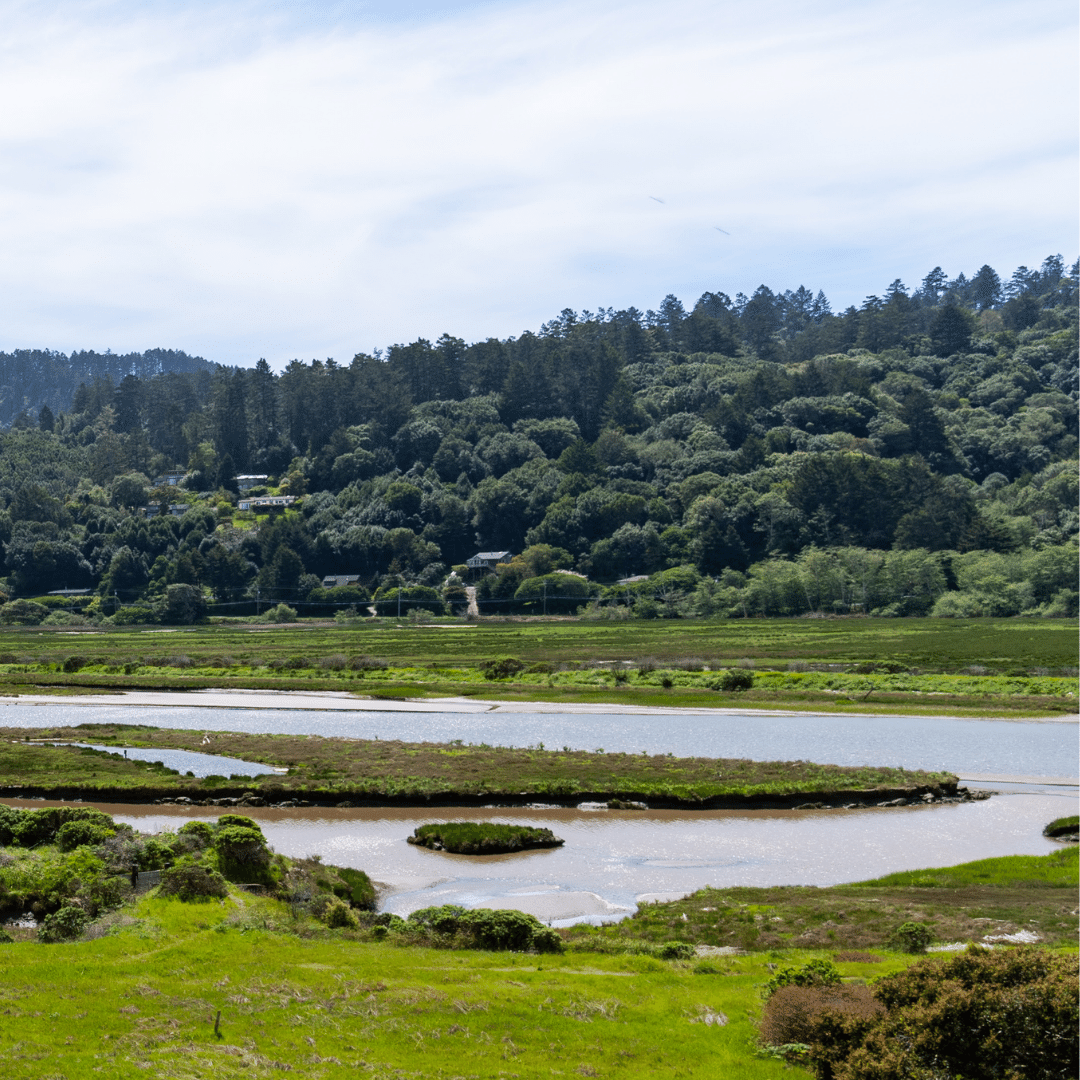 | California, Don't Forget Blue Carbon in Climate Planning Blue or aquatic carbon has significant carbon sequestration potential, 10x faster than terrestrial forests. Unfortunately, it’s often overlooked in climate planning, which is why it's essential for the public and organizations working on climate change to raise this issue at every planning opportunity. In May, the California Air Resources Board (CARB) released an updated draft scoping plan that identifies the actions and investments that California can make to reach carbon neutrality by 2045. EAC and partners submitted comments encouraging CARB to include blue carbon and coastal wetlands into its scoping plan. Local scientists and partners wrote a comprehensive Op Ed on the topic, noting "But no other ecosystem in the state can, on an acre-for-acre basis, soak up more carbon than coastal wetlands and seagrass beds....” We must protect the few wetlands and seagrass meadows that we still have and restore others. EAC will continue to support blue carbon solutions and raise awareness around its important carbon sequestration and other co-benefits. LEARN MORE: |
|
|
| | Learn More About Our Campaigns & Programs |
| We endeavor to keep our website up to date with the latest information on our campaigns and included some quick links in case the topic you're most interested isn't featured in this month's e-news! Some links to campaigns below or click on the images to view those pages directly. |
|
|
| | | |  | Did you know you can set up a recurring gift online? Whether you choose to set up an annual recurring gift,
or want to spread out your giving monthly or quarterly, a recurring gift is
a great way to provide stable income to our nonprofit, so we can stay focused on our environmental protection advocacy work and impact on our community - thank you! |
|
|
| | Our Online Store - Giving with Purpose Give a gift with purpose and support our nonprofit mission with a gift from our online store. Shop hats, totes, tees, sweatshirts and more in a variety of styles. Shop Now |
| |
|
| MISSION To protect and sustain the unique lands, waters, and biodiversity of West Marin.
We achieve this goal through advocacy, education and engagement opportunities. VISION Our work strives to provide long-term protection and conservation of the unique ecosystems and rural communities of West Marin, and serves as a foundation of environmental protection for future generations. |
|
|
| Contact Us Environmental Action Committee of West Marin (EAC)
PO Box 609 | 65 Third Street, Suite 12
Point Reyes Station, CA 94956
(415) 663.9312 | info@eacmarin.org
www.eacmarin.org | www.pointreyesbirdingfestival.org |
| FOLLOW US We frequently post updates
on our social media networks including
information on weekly water quality results,
program news, and other alerts. |
|
|